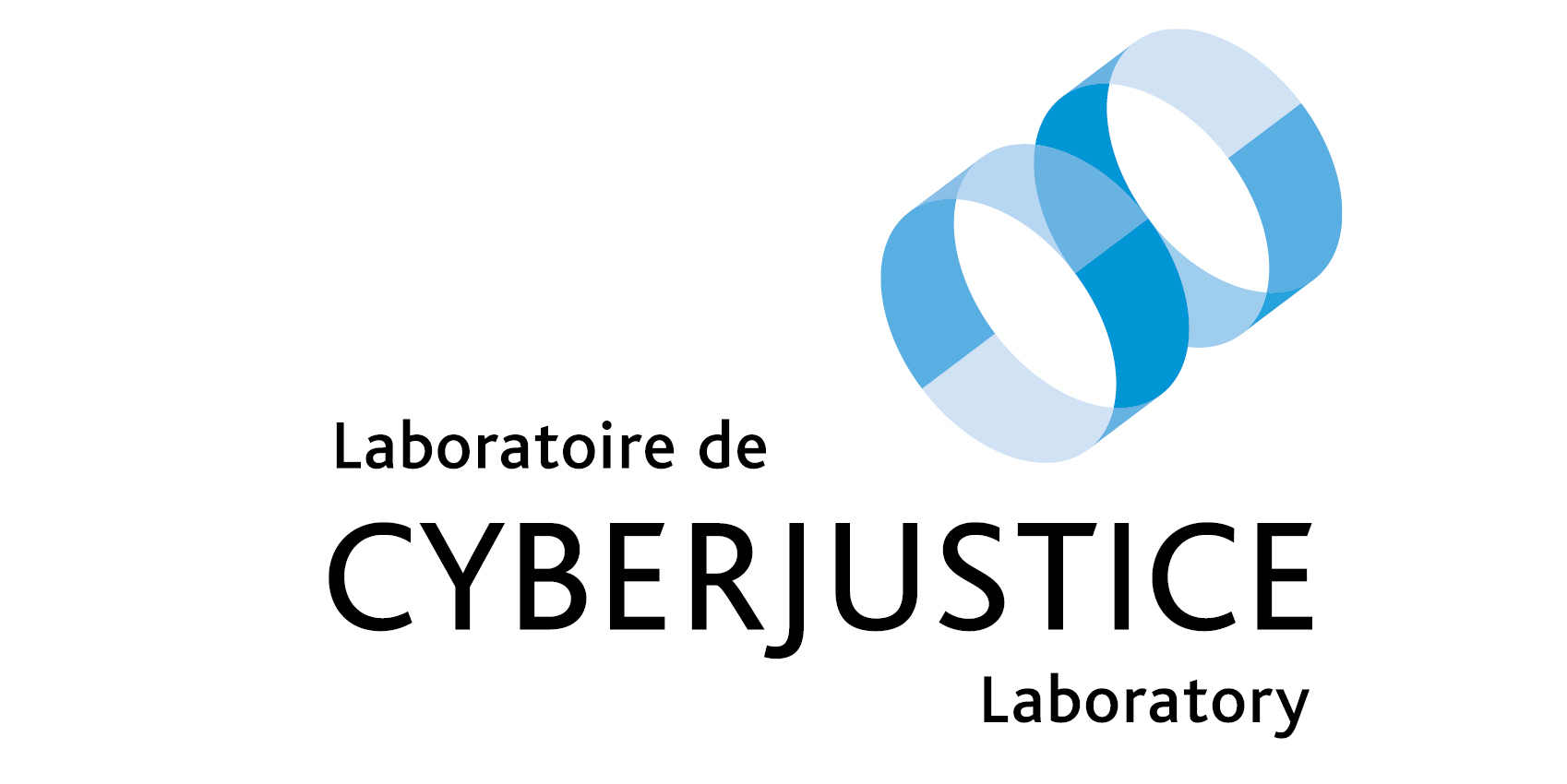Survey finds British Columbia’s Civil Resolution Tribunal improves access to justice

Written by Luke Wan Jeagal, Research Assistant at Cyberjustce Laboratory and Intern at Université de Montréal
Introduction
Online dispute resolution (ODR), a form of dispute resolution leveraging technology and alternative dispute means to facilitate dispute resolution between parties, is becoming increasingly popular as a solution to improve access to justice and increase the efficiency of the legal system. In 2016, British Columbia launched the Civil Resolution Tribunal (“CRT”), the first tribunal to implement ODR mechanisms in Canada [1]. It aims to provide a more efficient and accessible justice system to resolve civil disputes and attracted international attention for its innovative approach.
Since its inception 7 years ago with the aim to optimize the resolution of low-intensity conflicts (see below section on CRT Jurisdiction), little research has been done on the effectiveness of the CRT and similar ODR initiatives in increasing access to justice. It brings into question whether the ODR approach work in practice and is effective in its intended aim to increase accessibility.
In 2019, researchers at Thompson Rivers University’s Faculty of Law conducted a qualitative survey of user experiences with this ODR system. They published the results of their study in the Windsor Yearbook of Access to Justice. The article provides an exploratory look into the benefits and challenges of using the CRT and sheds some light on its impact on access to justice in Canada.
Study Findings
The authors found that most survey participants were satisfied with the CRT and found its resources helpful. It helped them solve their legal problems and saved them money. They found being able to access this online and remote platform at all times to be convenient, especially in consideration of work and other responsibilities.
For some survey participants, the CRT provided proportional justice where they would not have otherwise had viable recourse. While some found the CRT process confusing and difficult to navigate, and some also criticized the CRT as a justice institution, the majority of survey participants who had experiences coping with legal problems (including in the traditional courts) found the CRT to be an improvement.
The CRT and its functions are described in detail at the end of the blog post.
Study Methods
The self-reported survey included qualitative feedback from 49 British Columbians who used the online court system about their experience. For many participants, the CRT provided an accessible, convenient, and proportional means for resolving legal problems, especially when they may have no other realistic alternative. While CRT enhances access to justice, some users found the standard of the CRT to be below what they expect from the public justice system and expressed frustration at having to use this system instead of traditional courts. Some users expressed skepticism about the neutrality, fairness, and expertise of the CRT.
Solution Explorer
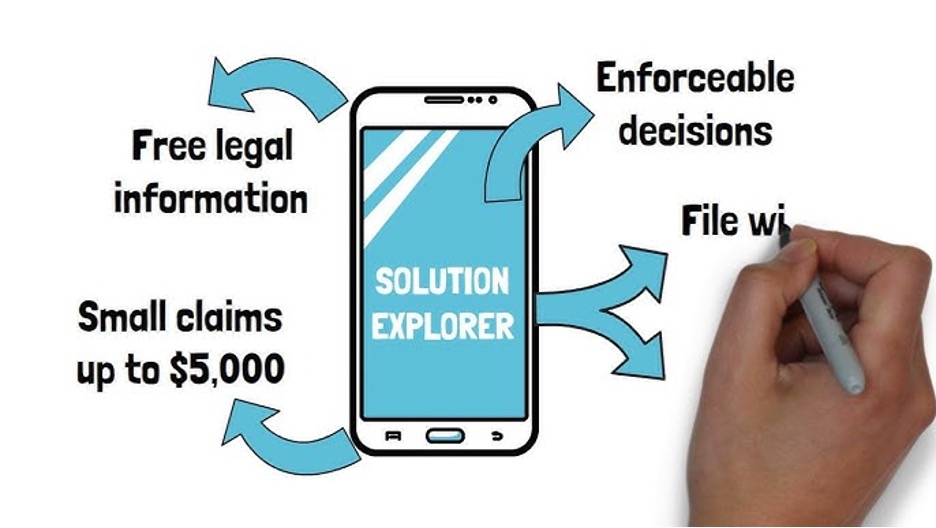
Three quarters (37) of the survey participants said that the Solution Explorer was at least a little bit effective, while a quarter (12) said it was not helpful at all.
What participants found helpful about the Solution Explorer was the ability to use the system at convenient times (43%), anywhere without having to travel (39%), and its ease of use (35%).
The most common difficulties participants experienced were that the information they got did not help with their problem (43%) and having a problem that was not covered by the Solution Explorer (27%).
20% of participants expressed feeling anxious about inputting their legal problem into an online system. 6% said they had trouble using the system because of a lack of good internet access. 20 participants said that they received help from someone in using the Solution Explorer. The majority of those who received help (16 of 20) said that the Solution Explorer provided either all or most of the help that they needed.
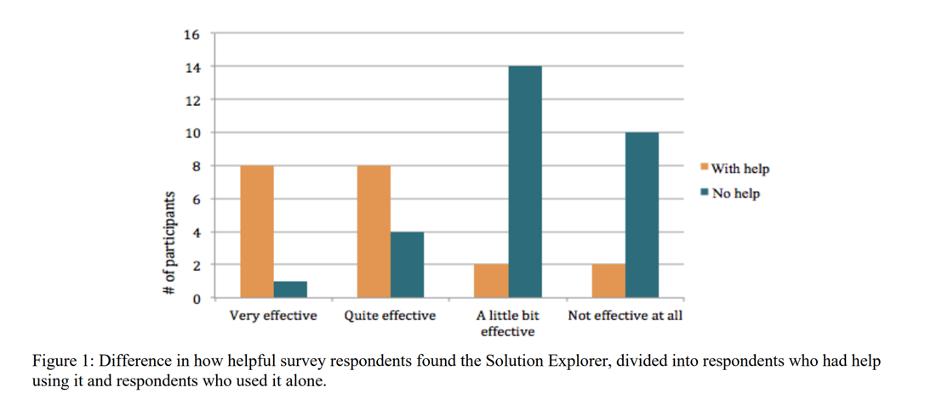
Strata vs. Small Claims

Survey participants who used the Solution Explorer for small claims matters generally found it more helpful than those who used it for strata matters. The authors postulated that this difference in satisfaction may be due to the differences between the kinds of information and resources that the Solution Explorer provides in strata matters as opposed to in small claims. While strata law is relatively narrow and specialized, small claims is a broad area that covers a wide variety of legal matters, including consumer, property, personal injury, and employment claims.
Another factor to account for the difference they postulated was the fact that participants who used the CRT for strata matters were more unhappy with the system.
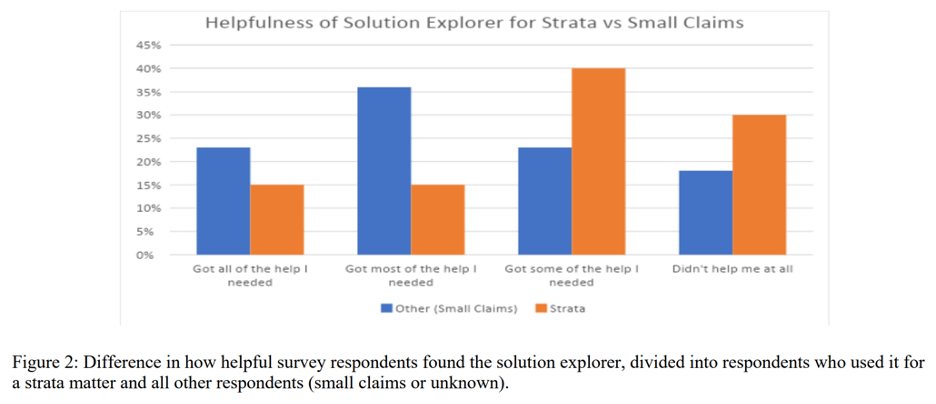
CRT vs. Court
21 of the 49 participants also had a legal problem in the last three years. 14 of the 21 (67%) said that the CRT was either much easier or somewhat easier than court. Their reasons included: was being able to use the system at any time (33%), “the rules were easy to understand” (19%), “I didn’t have to travel to a court building” (19%), “I didn’t have to interact with the other side in person” (19%), and “the system worked around my needs” (19%). 13 of the 21 had experience with the public court system in British Columbia. They were either somewhat or much more satisfied with their experience at the CRT. The most common reason that people were more satisfied with the CRT was that they liked the outcome (62%).
Accessibility

Technology also impeded accessibility. The 49 survey participants skewed slightly older and almost a third of participants said that they found it difficult and confusing to use the system.
Out of the 45 survey participants who participated in dispute resolution at the CRT, 13 indicated they were confused about the process or found the rules or materials hard to understand. Themes identified included the rules and communications being unclear and the process being difficult to navigate for an ordinary person.
Study Recommendations
To rectify these challenges, the authors recommend improvements addressing the challenges users identified. They suggest easier, more accessible ways to get help with the process including navigators, information about options to help, and allowing alternative legal service providers, clinic and pro bono lawyers to represent parties in CRT proceedings. They also recommend increased public awareness through education and additional technological tools to assist users.
CRT Jurisdiction
The CRT was established by the Civil Resolution Tribunal Act. The act came into force in 2012 and has been amended several times since then. The CRT began handling its first cases in 2016. At that time, its jurisdiction was limited to certain strata (condominium) disputes. In 2017, the CRT took jurisdiction over small claims disputes up to a value of CAD $5,000. In 2019, the CRT assumed jurisdiction over motor vehicle injury disputes up to CAD $50,000 and disputes involving societies and cooperative associations.
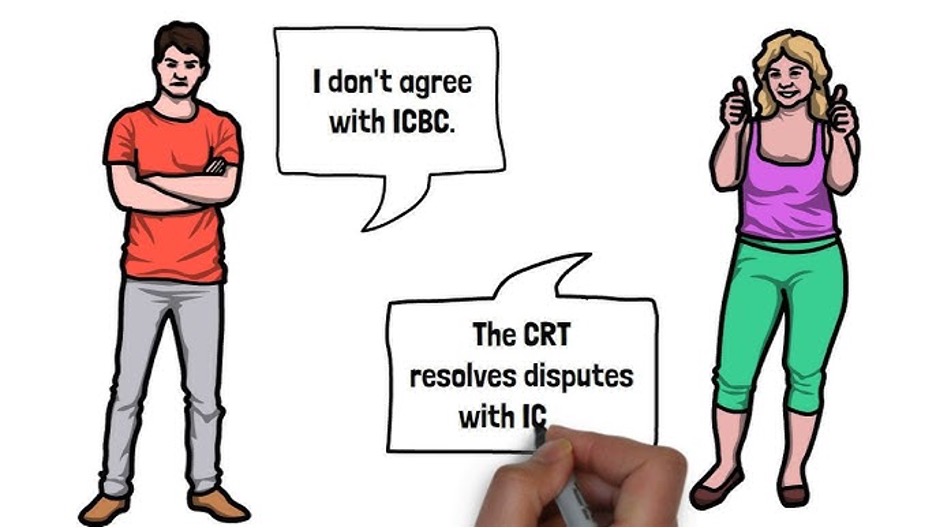
Further reforms came into effect in May 2021 to expand its jurisdiction. In most matters of motor vehicle injury, plaintiffs can no longer make a claim against people or organizations. However, the CRT can adjudicate claims in limited exceptions such as when a motor vehicle accident is caused by an impaired driver. The CRT also reviews ICBC decisions on determining responsibility for a motor vehicle accident. By default, parties in CRT proceedings other than motor vehicle accident claims are required to represent themselves.
The tribunal’s decision-making members are appointed by Order in Council based on recommendation by the CRT Chair. They are required to perform their duties “faithfully, honestly and impartially.” They have law degrees, expertise in one or more areas of CRT jurisdiction, and professional experience as legal advocates or decision-makers. All CRT decisions are published on the CRT website, and on CanLII.
CRT Approach
CRT uses a “user-centric approach which puts the public first” and “a systemic orientation toward the people who need justice services, rather than those who provide them”. It provides an accessible, informal, and flexible avenue for dispute resolution that encourages dispute resolution by agreement and resolves conflicts in a manner that recognizes ongoing relationships between the parties.
The CRT is not a court, but rather an administrative tribunal: decision-making body whose jurisdiction was enacted by statute to settle specific types of disputes and determine the rights of parties. It has its own rules of practice and procedure. It was statutorily mandated to provide flexible and informal dispute resolution.
CRT Procedure
The process begins with the Solution Explorer, a series of questions about the parties’ legal problem that guides them to content tailored to their responses. It then goes to the “case management phase” where parties are encouraged to negotiate. This stage facilitates settlement, failing which the case moves to the preparation of a tribunal decision plan for the tribunal hearing phase. Finally, the case moves to the “tribunal hearing phase.”
At the negotiation stage of the case management phase, the parties communicate with each other without active assistance from CRT staff. If the parties agree on a resolution at this stage, they can get their agreement formalized as a binding Consent Resolution Order. If all aspects of the dispute are resolved by agreement, the applicant’s fee is refunded.
If the parties move on to a facilitated settlement, the CRT case manager takes an active role. The parties set out their versions of the case and exchange settlement offers. If the parties still do not resolve the dispute, it moves on to the tribunal hearing phase.
At the tribunal hearing phase, written submissions are exchanged between the parties asynchronously on the CRT’s online platform. The procedure is conducted by telephone, videoconference or, in rare instances, in-person hearings. Tribunal adjudication results in a final, binding decision from a tribunal member and an enforceable tribunal order.
This content has been updated on 12/14/2023 at 11 h 15 min.
